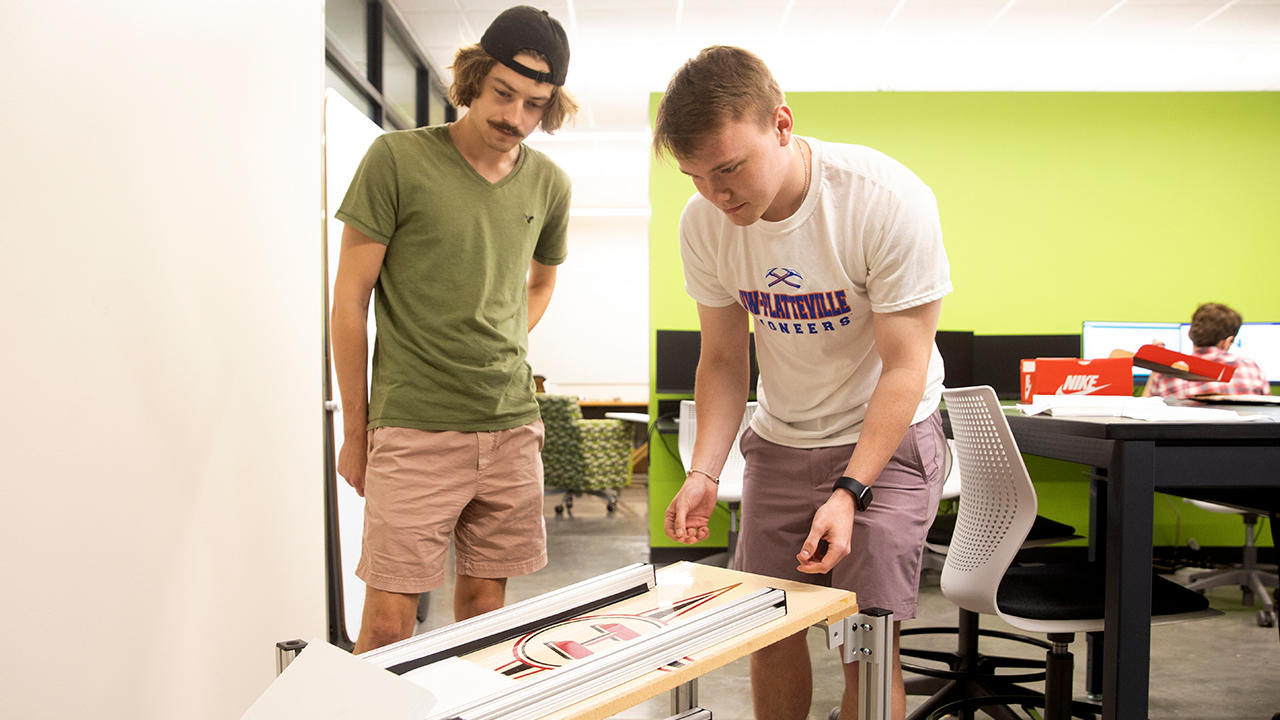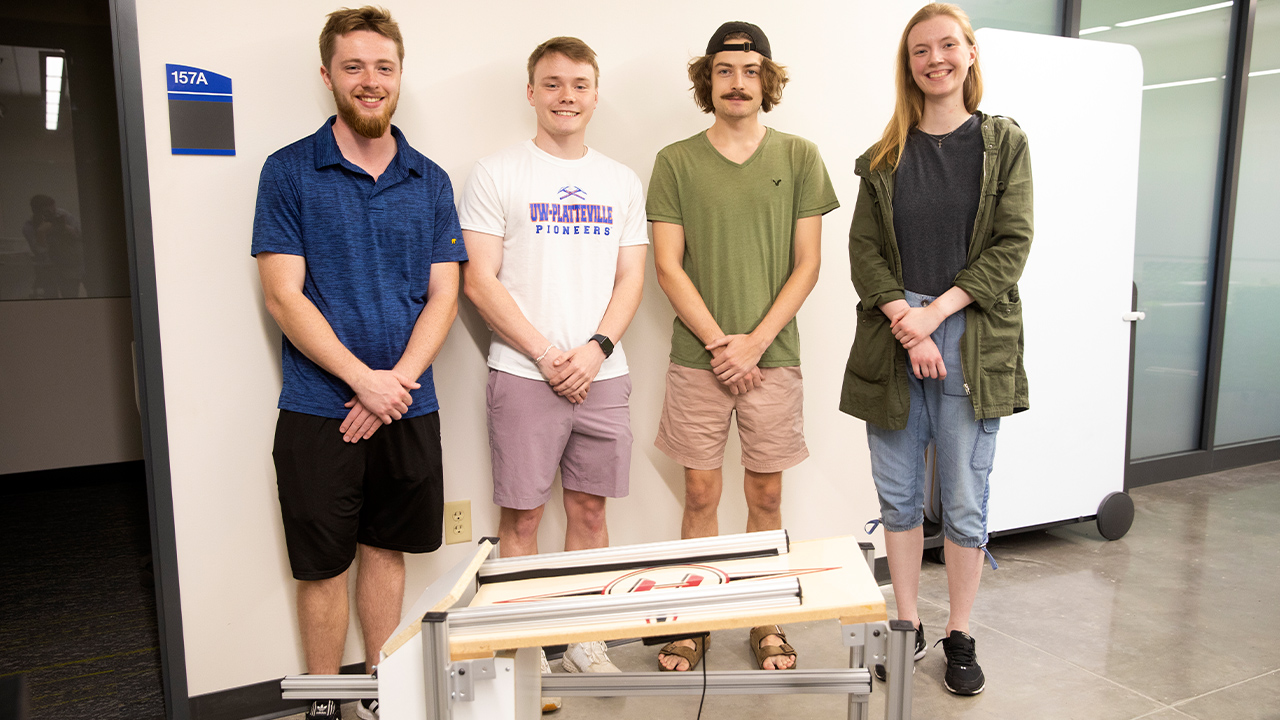

University of Wisconsin-Platteville engineering students will showcase their capstone Senior Design projects at the bi-annual Senior Design Open House on Wednesday, May 17. Open to the public, the event will be held in Busby and Sesquicentennial halls.
UW-Platteville’s Senior Design program pairs student groups with industry and community sponsors to solve real problems or create new products. More than 40 projects will be presented at the open house, representing mechanical engineering, industrial engineering, engineering physics, software engineering and sustainability and renewable energy systems. One group is working with L.E. Phillips Career Development Center to design an automated diaper tab stacker.
“They currently have two people manually stacking cloth tabs that are later attached to adult-sized diapers,” explained team member Bethany Rozof, a mechanical engineering major. “We are in charge of automating the stacking process for these tabs so that one of the people can help in a different part of the organization.”
The team spent the semester researching, brainstorming and building a prototype of the automated tab-stacking machine. The design features a ramp with rails that will straighten the cloth tabs and a container that will create the stack. The organization has machines that cut the cloth to the proper size and the tabs will fall from one of the cutting machines onto the ramp.
“Our design uses the same physics as an air hockey table and creates a small layer of air on the ramp which helps the cloth tabs slide,” said Rozof. “Once the tabs leave the ramp, they will fall into place within the catching device that stacks them using gravity. We hope to give our sponsor our prototype and a duplicate prototype so that both cutting machines can have an automatic stacking process prototype.”
Throughout the Senior Design course, students are supervised by an industry and faculty advisor as they explore every aspect of their project—from creative development and project management to engineering ethics, product safety, copyrights and patents and more. It’s this experience that many of the students say will give them an advantage when they enter the workforce.
Tyler Radtke, a mechanical engineering major, and his group are working with Farmers and Robots to create a network system for automating the rolling up and down of a greenhouse side curtain, based on temperature and humidity. The system connects to the internet so that a farmer can check the status of the greenhouse from anywhere, which will save small farmers the time of not having to commute to the farm to manually roll up or down the curtain.
“The benefit that we found working on a design product with a real client is that we gained communication skills with the constant updates that we provided to our sponsor,” said Radtke. “Additionally, this project was our first major dynamic project where there was no clear-cut rubric as to how we need to solve the problem at hand.”
In addition to industry partners, other senior design groups are paired with community members or organizations. One group partnered with a local high school student with cerebral palsy and Lennox-Gastaut syndrome, a form of epilepsy that causes multiple seizures per day. The group was tasked with designing improvements to his wheelchair, including a reinforced seat frame, stronger footrests and improvements to the seat cushion supports and headrest.
“The breadth of projects the students worked on shows off the universal nature of engineering,” said Dr. Jessica Fick, assistant dean of the College of Engineering, Mathematics and Science. “All the teams are solving real problems that people and organizations have and creating value through their solutions”
To view all of the projects and the open house schedule, visit www.uwplatt.edu/senior-design.